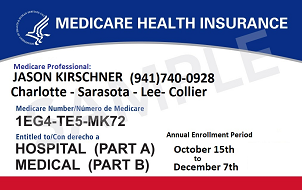On July 30, 1965, President Lyndon B. Johnson signed into Medicare history the Medicare and Medicaid Act, also known as the Social Security Amendments of 1965. It established Medicare, a health insurance program for the elderly, and Medicaid, a health insurance program for people with limited income.
In 1965, the passage of the Social Security Amendments, popularly known as Medicare and Medicaid Act, resulted in one basic program of health insurance for persons aged 65 and older, and another program providing health insurance for people with limited income funded by state and federal sources, respectively. It was funded by a tax on the earnings of employees, matched by contributions by employers, and was well received. In the first three years of the program, nearly 20 million beneficiaries enrolled in it.
Debate over the program actually began two decades earlier when President Harry S. Truman sent a message to Congress asking for legislation establishing a national health insurance plan. At that time, vocal opponents warned of the dangers of “socialized medicine.” By the end of Truman’s administration, he had backed off from a plan of universal coverage, but administrators in the Social Security system and others began to focus on the idea of a program aimed at insuring Social Security beneficiaries whose numbers and needs were growing.
The 1950 census showed that the aged 65 population in Florida and the United States had grown from 3 million in 1900 to 12 million in 1950. Two-thirds of older Americans had incomes of less than $1,000 annually, and only one in eight had health insurance. Between 1950 and 1963, the aged population grew from about 12 million to 17.5 million, or from 8.1 to 9.4 percent of the U.S. population. At the same time, the cost of hospital care was rising at a rate of about 6.7 percent a year, several times the annual increase in the cost of living, and health care costs were rapidly outpacing growth in the incomes of older Americans.
Private insurers had long considered this illness-prone population a "bad risk.” A broad debate about the need for a social insurance program to provide older Americans with reliable health care coverage started within the Social Security Administration and in Congress. Public hearings were held, and the House of Representatives considered several proposals, but the debate did not intensify until 1960, when it became clear that private insurers were becoming increasingly incapable of providing comprehensive, affordable health care coverage to the rapidly growing population of older adults. Between 1960 and 1965, the health coverage debate was a front burner issue in Congress, with dozens of proposals introduced and testimonies given by representatives of major organizations, including the American Hospital Association, the American Medical Association, and the AFL-CIO.
After Congress passed Medicare legislation in the summer of 1965, President Lyndon Johnson decided to sign the historic Medicare bill with former President Truman at the Truman Presidential Library in Independence, MO, in order to recognize Truman’s early effort to establish a national health insurance program. On July 30, 1965, Air Force One departed for Missouri with the President; Mrs. Johnson; George Meany, president of the AFL-CIO; Secretary of Health, Education and Welfare Anthony Celebrezze; Governor John Connally of Texas; 13 U.S. Senators; and 19 U.S. Representatives. President Johnson and his party were met by President and Mrs. Truman at the Truman Library in Independence. They visited for some time before moving on to the platform in the auditorium of the library for the bill signing. After some brief remarks, President Johnson signed into law the Medicare Social Security Amendments. Johnson gave the first souvenir pen to Mrs. Truman and the next to President Truman and then the remainder of the pens to guests on the platform.


